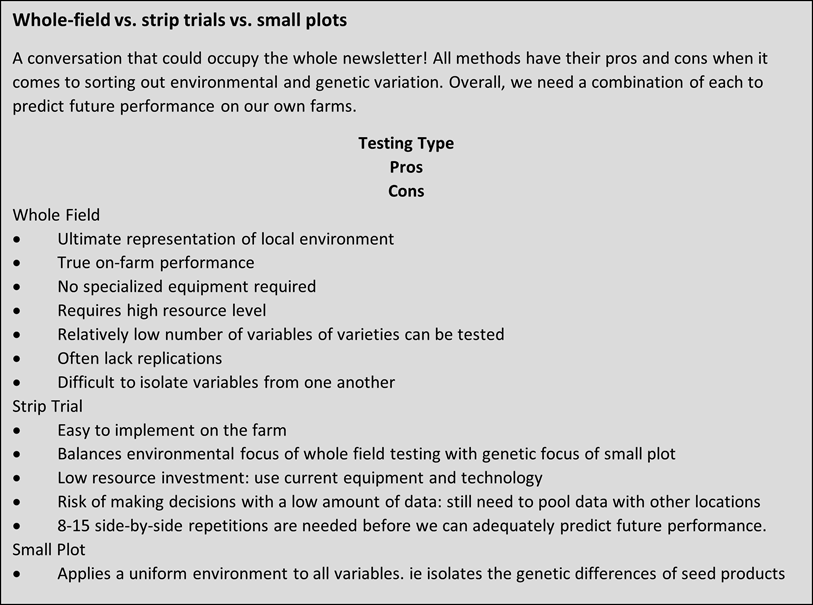Interpreting Yield Data of Seed Products in 2023
BY Dairyland Seed Agronomy Team
Yield reports are very strong so far this year. Who would have thought that to be the case after such a dry summer? Despite overall strength, we are still picking up on a level of variability that one would expect in a stressed year. Sorting out the hot hybrid or production practice will be more difficult this year. It will require a more critical eye in evaluating our production practices while also having the ability to acknowledge the difficulties of the 2023 season.
Base your evaluations on multiple sources of input ranging from your farm to the many third-party testing and research organizations. From Dairyland Seed, you can expect to see local plot data on our product performance and agronomic information from our Product and Agronomy Research (PAR) Plots. Here is our annual reminder of how to digest this information.
- Balance your analysis with local and regional results. Seek data from environments that are like your target environment -- even if it’s not within your exact geography.
- Consistency of a product or practice should be a high priority, possibly more than pure yield. It’s nice to study trial winners but look for those which are consistently in the top third. This could be especially rare to find following the drought stress of 2023.
- If looking at strip trial results, pay attention to the number of repetitions and realize that data may not be Look beyond the average yield data. If Product X averaged 250 bushels and Product Y averaged 230 bushels, were they at the same locations the same number of times? If so, the data is balanced. If not, look at performance in relation to the average of the experiment because a measure of bushels may not be a fair comparison.
- For seed, consider maturity or moisture in your evaluations: later maturing varieties bring more yield. A plot winner may not be as impressive if its 5 points wetter than average at harvest. Compare products of similar maturity. On the flip side, its impressive when a dry product finishes near the top!
- Small-plot statistics lingo
- Coefficient of Variance (CV): standard deviation ÷ trial mean. Standard deviation is a measure of the dispersion of data points around the mean. Higher CV=more variation.
- Least significant difference (LSD): the minimum difference between products required to call them statistically different. It is a ranking tool.
- A frequently asked question: which LSD should I look at? LSD (0.05), LSD (0.10) or LSD (0.25)? It’s a classic “it depends” scenario. We are balancing the need for a useful outcome (i.e., ranking corn hybrids) with properly accounting for errors and giving us confidence that a result might be repeatable. Of the three, LSD (0.05) will be most critical of the data and give you the highest confidence that a given result is true and repeatable. However, it will have the highest numerical value and may not sort and rank products or treatments as much as we wish. LSD (0.25) will provide more separation in the rankings but provides less confidence that the result is true. It increases the risk of a false positive, meaning that it is more likely to give us a statistical difference for something that might be a result of random environmental variation or testing error.
- We intuitively know that greater separation provides greater confidence, LSD provides the benchmark.


Brian Weller
Western Region
507.456.3034

Rod Moran
Western Region
507.456.3034

Dan Ritter
Central Region
219.863.0583

Branden Furseth
Northern Region
608.513.4265

Mark Gibson
Eastern Region
260.330.8968

Amanda Goffnett
Eastern Region
989.400.3793

Ryan Mueller
Eastern Region
989.400.3793
